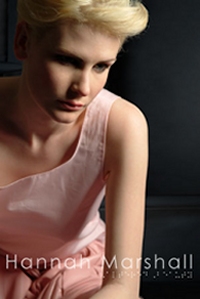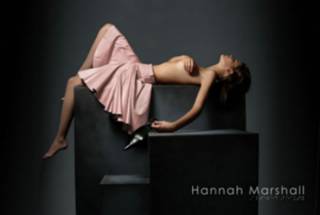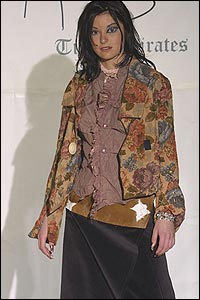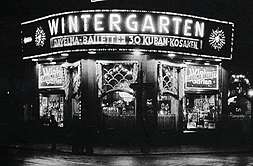Home > Fashion in the News > Fashion in the News 2005
Fashion in the News 2005
Well, look who shop till they drop now...: The secret's out - men enjoy retail therapy as much as women, and they spend a whole lot more, too. Menswear is having its moment in the sun. Topman recently exhibited its first collection at London Fashion Week to much acclaim; shortly afterwards, the company launched its first Design Range, which sold out almost immediately. Says Gordon Richardson, Topman's creative director: "Blokes are far more informed about fashion than they used to be, and in turn they are more confident about it. They're no longer scared to go out shopping in groups, or to critique each other." Meanwhile, a recent survey by Brunel University found that men's genetics make them far better shoppers than women, while another revealed that while British women spend £8.3 billion a year on luxury goods, they are outstripped by men, who spend £11.6 billion. This article reports the views of four men who have made a significant contribution to that sum.
When Henry Conway was just 11 years old, he started keeping a fashion diary made up of cuttings from the pages of magazines. He believes that Prince Charles has a nice aesthetic and always dresses immaculately.
Darryl Samaraweera spends £500 a month on clothes and buys things knowing that he will never wear them, just because he likes the look of them.
Jonny Ward-Manning, with his tanned skin and dyed blond hair, is the epitome of metrosexuality. He wears a Gucci ring on one hand and a Tiffany ring on the other, while a pair of Ray-Ban aviators covers his eyes. His friends don't ever make jokes about it, because - he says - they are exactly the same. "It is partly down to the MTV culture. "We were teenagers in the mid-Nineties, when boy bands were at their peak. Before that, everything had been grunge or punk. Suddenly, it was OK for men to exfoliate. I did it partly to impress the girls, but strangely, also to be one of the lads."
Jonas Andersen thinks it is very important to know about the quality of what you are buying. "You see a lot of expensive things that are actually made of cheap material with a huge mark-up. I like to know about fibres, so that I know what I am buying. If you buy quality clothes, they last and you don't have to throw them away."
The Daily Telegraph: October 19, 2005
Cultural gem at height of fashion: Turquoise has been part of the culture of Native Americans from the Southwest for hundreds of years. In recent months it has seen a revival, thanks to all the Western-inspired looks flooding the fashion aisles of stores. New products, from Ralph Lauren's Pure Turquoise fragrance to designer Luca Trazzi's turquoise cappuccino maker to party planner Colin Cowie's turquoise votives, attest to the popularity of its color. Fashion lovers seeking inspired looks can turn to "Totems to Turquoise: Native North American Jewelry Arts of the Northwest and Southwest". Key themes of the exhibition — organized by the American Museum of Natural History in New York — include jewelry as portable symbolic art; motifs transferred to jewelry from other art forms; and how artists today are both drawing on, and departing from, tradition.
The Atlanta Journal-Constitution: October 12, 2005
Step aside Armani, NCSU is on the runway: Thirty top designers, including Diddy, Armani and Abercrombie, make up the Young Menswear Association. The YMA was developed to highlight men’s fashion in a woman’s world. Over the past few years, it has scoured the nation’s top design schools to find 30 of the most promising young talent in the field. About ten percent of recipients of the annual YMA fashion award, which includes a $5,000 scholarship, are from North Carolina State University (NCSU). This past year, Amanda Barrett, a senior in design and textile and apparel management, Chris Jordan, a senior in textile and apparel management and Kendall Smith, a senior in textiles and apparel management and multicultural studies, kept the tradition alive. “Textiles gives a really good, very technical background. You learn all the properties of fabric which gives a real edge in fashion design,” Smith says.
All three took advantage of these technologies when creating their portfolios for the YMA last year. Barrett designed a pink and grey argyle pattern, which she describes as “very 80s preppy, Lacoste-ish.” She then used a machine at the textile school to knit the fabric. Barrett says her design sense has ready-to-wear in mind. Jordan’s designs are a little different. “I design a lot of things that are crazy. I like to start with something that is art and funnel it down into practical clothing,” says Jordan. Smith hasn’t experienced an internship yet, but she hopes for one next summer as she gears up already for this coming year. In only a few weeks, her designs made out of non-woven fabrics will be showcased in a St. Louis fashion show. Non-woven fabric consists of materials randomly being rolled together, rather than woven or knitted as in traditional fabric. It’s quickly becoming in high demand for its efficient production and low cost. Using theme in high fashion is hardly a new concept, and Smith is excited to branch out and “be more couture.” The couture side of fashion design has nothing to do with the clothes currently walking the street. Especially as American society becomes exponentially more causal, the high art of couture is pinned to the runways. Embellished denim and screened T-shirts are at the height of popularity everywhere.
Technicianonline.com: September 09, 2005
The "killer hat" crusades: Hats were a fashion necessity in the 1890s and early 20th century, with feathered hats and accessories among the most stylish. Millions of birds were killed to provide decoration for hats and other fashion until socially conscious women started a crusade for bird protection that's now considered to be the first modern conservation movement. The crusaders against "killer hats" joined concerned scientists to form the Audubon Society, celebrating its 100th anniversary this year.
"Killer Hats: Birds on the Brink" at the Washington State History Museum in Tacoma tells the story of this crusade, with feathered hats, capes and fashion prints from the early 20th century, along with reproductions of 12 original paintings of birds by John James Audubon from his classic "Birds of America." Displays tell a story of environmentalism from then to the present, including efforts from the 1940s to preserve the bald eagle.
The Seattle Times: September 08, 2005
Cancer be damned, kids wanna tan: The Canadian Dermatology Association says, "No tan is a good tan," since all exposure to solar radiation -- whether from the sun or a tanning lamp -- damages the skin to some extent. To the sun-obsessed, you might as well be saying, "No air is good air." Young people, especially, have re-embraced tanning with a vengeance, heading to tanning salons and, in warm weather, soaking up the sun. Last month, the American Academy of Dermatology released a survey indicating 79 per cent of youths between 12 and 17 know suntanning can be dangerous. And 81 per cent recognize that sunburns during childhood up the risk of skin cancer. Yet 60 per cent said they burned last summer. It gets worse: while more than a third of those surveyed said they knew someone who had skin cancer, almost half said people with tans look healthier.
In the 19th and early 20th centuries, pale was in. European women would casually twirl frilly parasols to shield themselves from the sun, notes Stephen Katz, a sociology professor at Trent University in Peterborough, Ont. Back then, if you showed up in public with a tan, a man could be mistaken for a field hand, and a woman for a prostitute. "Tans were labour tans," explains Katz, "and not leisure tans like they are today." In the early 1920s, "sun therapy" became popular and was prescribed for everything from fatigue to tuberculosis. Also in the '20s, fashion fixture Coco Chanel made a splash with her divine golden hide, compliments of the French Riviera. Baby oil hit the scene in the 1950s, and in '53 Coppertone unveiled its iconic ode to the tan -- and one of the advertising world's most recognized trademarks -- the little blond girl with pigtails and the cocker spaniel tugging at her bathing suit.
Silver metallic UV reflectors were common tan enhancers by the late 1950s, and the '60s revelled in the sand-and-surf ethos epitomized by the Beach Boys. Then, the Me Decade of the '70s gave rise to the tanning bed. A bronzed and perky Farrah Fawcett gleamed from posters on the walls of many a teenage boy. In '79, sun-meister George Hamilton became the first actor to portray Dracula with a tan, in Love At First Bite. Also that year, Bo Derek scored a perfect 10 for tanning and other attributes in 10. In the 1980s and '90s, tans took a hit, when the world looked up to realize the ozone roof over our heads was raining down radiation.
But by the late 1990s, while many continued to be mindful of the sun's harmful effects, all seemed right again in celebrity land, particularly when Bündchen hit the scene. Soon afterwards Britney Spears and Jennifer Lopez appeared all nice and brown. Aniston gleamed on Friends. By 2003, spray booths offering guilt-free tans took off. "Tans are what sociologists call a signifier, or a sign, because here we have something that doesn't really mean what it means," says Katz. "Unlike good posture, and an appropriate weight, having a tan does not mean you're healthy -- at all. It is the 'sign' of health, or myth of health, ruggedness, being outdoors, as well as a sexual sign."
Maclean's: June 27, 2005
Muslim women combine tradition and trendy fashion: The trend of stylishly veiled young women is growing in Lebanon's Muslim communities today. Dr. Hassan Hammoud, associate professor of sociology at the Lebanese American University, explains that women in Lebanon are bombarded by messages and images of how fashionable a woman ought to be in terms of outfit and physical shape. "Young girls try to fit into this model," he says. "They build an image of themselves made out of what they hear, see and expect themselves to be." And if veiled women come from an immediate environment that values fashion, then their clothes will be fashionable, too. "A veiled woman, like any other woman, holds an image of what is acceptable versus what is unacceptable, based on the values of her peer group, her family, her community," Hammoud explains. The Koran and Sunnah, or teachings of the Prophet, instruct Muslim women to cover their whole body, except for the hands and face, with loose and nondiaphanous clothes. They make no mention of form, style and color, leaving the door open to personal interpretation. A much stricter interpretation came from Salafi scholars. Salafi tradition, mainstream in countries such as Saudi Arabia, advocates a return to the lifestyle of the salaf, or ancestors, who lived during early Islam. Its understanding of Islamic laws is extremist. Hanadi Shehabeddine, a 29-year-old media and advertising professional, finds that "it is not wrong at all to be influenced by the West." In fact, she finds such an influence very "normal" given the power of globalization and the United States' leading position in the world.
The Daily Star: May 17, 2005
Last Supper advert is the final straw: Supermodels have fallen foul of France’s blasphemy laws with an advertising campaign that parodies Leonardo da Vinci’s painting, The Last Supper. The Parisian media and fashion establishment have denounced a court ruling for advertising posters to be removed yesterday from billboards across France within three days or risk a daily fine of €100,000 (£70,000) as an act of censorship. The advertising campaign for the Girbaud fashion house shows designer-clad women in the pose of the apostles and a half-naked man as Jesus Christ. Girbaud said that it would appeal against the ruling. French bishops are particularly upset that the advertisement shows a shirtless man to the right of the model representing Jesus in the arms of one of the female “apostles”. This appears to be an oblique reference to claims that the effeminate-looking apostle seated on Jesus’s right in da Vinci’s work was his follower, Mary Magdalene, and not John, as is usually stated. These claims were renewed by the American author Dan Brown, who suggested in his bestselling work, The Da Vinci Code, that the Church had conspired to hide Jesus’s marriage to Mary Magdalene. Thierry Massis, the bishops’ lawyer, said: “When you attack sacred things, you create a moral violence that is dangerous for our children. Tomorrow we’ll have Christ selling socks.” But Bernard Cohen, acting for Girbaud, said: “The work is a photograph based on a painting, not the Bible. There is nothing in it that is offensive to Catholic religion. It is a way of showing the place of women in society today.”
The Times Online: March 12, 2005
Licensed to click: Indian fashion photography is traditionally a male domain dominated by names such as Prabuddha Dasgupta, Atul Kasbekar, Tarun Khiwal, Denzil Sequeira, Farrokh Chothia, Subi Samuel. There’re no women on top in a profession that is for most part centred on women. Sumiko Murgai Nanda, over a decade old in the profession, blames it on mindsets. “In the beginning, clients would be reluctant, and apprehensive till I actually delivered the pictures. But as my work began to speak, gender issues started melting away.” New entrant Ronika Kandhari says the odds have been challenging but not insurmountable. “I began with fashion photography and portfolios, and moved on to wedding photography where women are even rarer.” Is a woman behind the camera more likely to produce better results with a female subject? Yes and no, says Murgai. “Female models have told me they’re more comfortable working with me, and I’d agree that a woman instinctively knows how another woman would look in a picture. But then, it all depends ultimately on how artistically the work has been presented…” No, says lensman Hemant Khandelwal. “Men understand the female form better than women.” According to him, the issue in fashion photography is competence, not gender stereotyping: “The fact is there are very few female photographers in India who are actually good… Nisha Kutty is outstanding, and Sumiko has made it big. That’s about it.”
Hindustan Times: March 10, 2005
Closets overflow with cheap clothes: For about a decade, almost without realizing it, Americans have benefited from falling prices for coats, dresses, men's slacks, women's skirts and blouses, toddlers' outfits, and other apparel as global quotas on clothing manufacturing have been systematically dismantled, boosting low-cost imports. Also keeping prices down is fierce competition among retailers who have to sell more to maintain profits. So fashions change in the blink of an eye, with as many as 13 seasons in the new clothing world. For American consumers, the decline in clothing prices is one upside of the trend toward globalization. Another result of inexpensive clothes is a burgeoning used-clothes economy that is filling the racks of local thrift shops, creating jobs, and producing a windfall for some nonprofit groups. Even high-fashion brands have not been immune. Ten years ago, a jacket from Jones of New York was priced at retail for $180 to $200, said Jones spokeswoman Anita Britt. It still sells for that amount, she said. "Have we taken prices up? No, not even to match inflation." Boston College sociology professor Juliet B. Schor, who wrote the recent book "Born to Buy", estimates that women bought 32 garment items a year in 1991. By 2002, according to her analysis of census data, they were buying about 50 percent more: 50 pieces. The gain was nearly as high for men.
The Billings Gazette: January 02, 2005

 Simona Iulini writes to Fashion Worlds from Italy about the fashion scene in Milan, the city in which she lives. She gives first-hand accounts of its shops, outlets, trends and exhibitions. Simona's experiences in public relations for Armani and Romeo Gigli, together with her organisation of fashion tours for her own personal shopper's agency, place her in an ideal position to gather the most interesting details about life in the city.
Simona Iulini writes to Fashion Worlds from Italy about the fashion scene in Milan, the city in which she lives. She gives first-hand accounts of its shops, outlets, trends and exhibitions. Simona's experiences in public relations for Armani and Romeo Gigli, together with her organisation of fashion tours for her own personal shopper's agency, place her in an ideal position to gather the most interesting details about life in the city.



